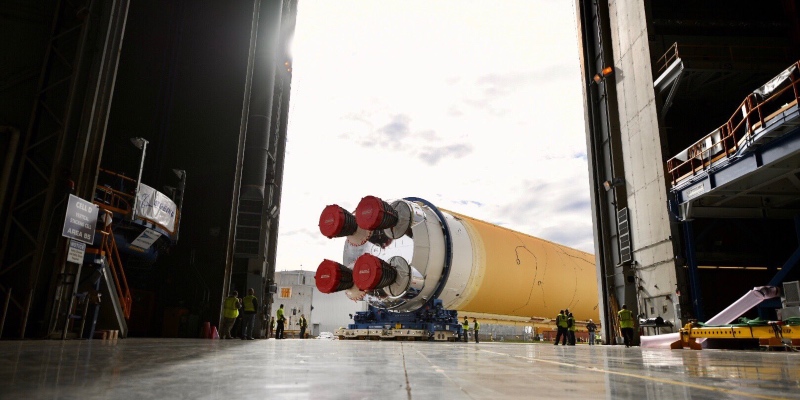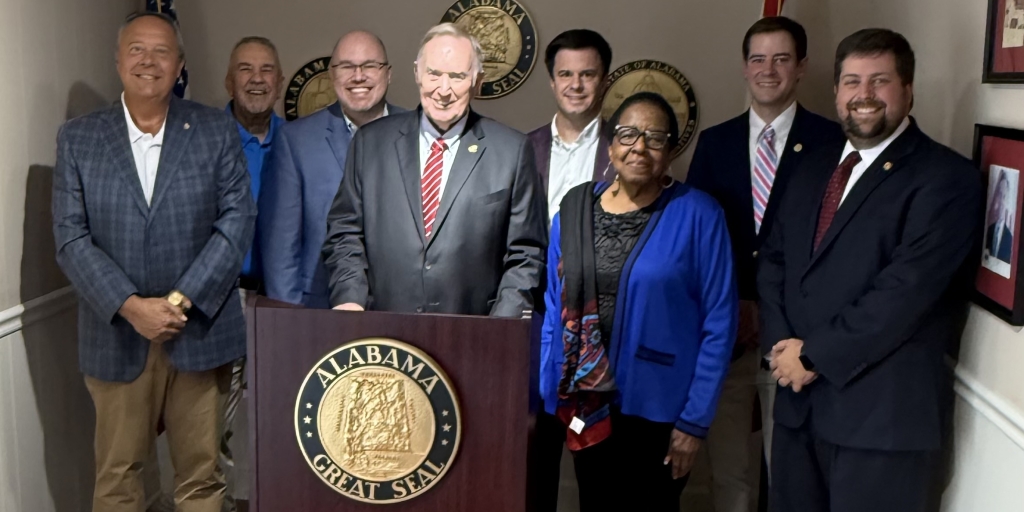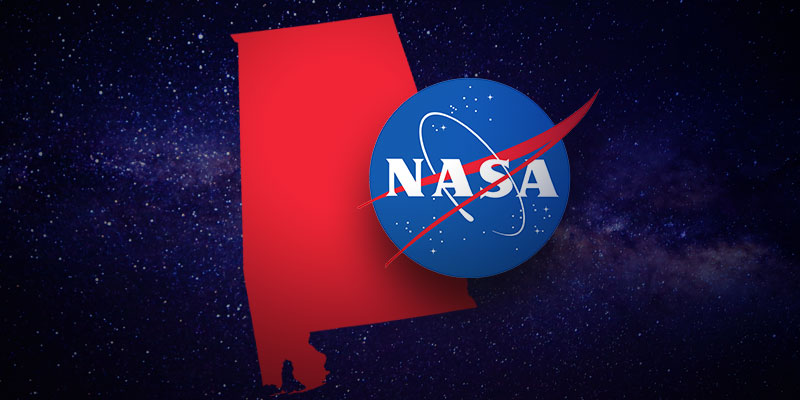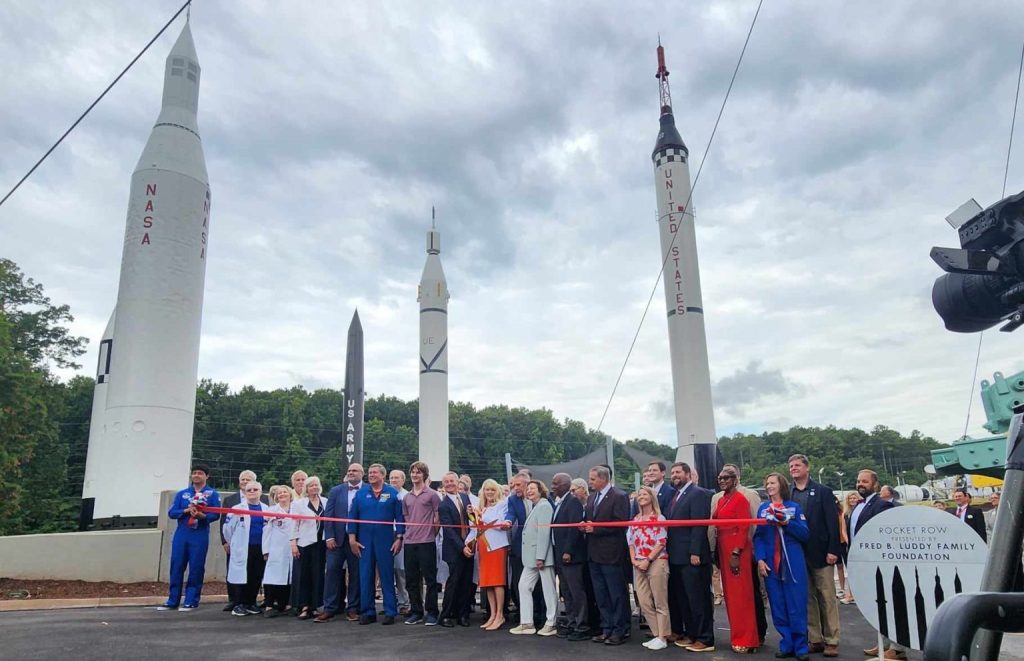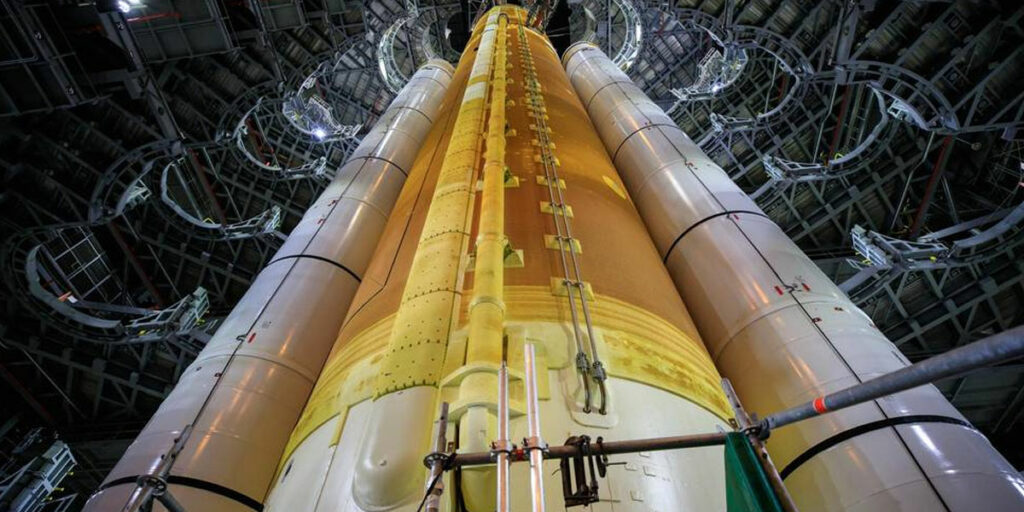History is gradually unfolding before our very eyes.
NASA on Thursday announced that teams at New Orleans’ Michoud Assembly Facility the day prior moved the first Space Launch System (SLS) rocket core stage, complete with all four RS-25 engines, to Building 110 for final shipping preparations.
Boeing is the core stage lead contractor, and Aerojet Rocketdyne is the RS-25 engines lead contractor. The SLS program is managed out of NASA’s Marshall Space Flight Center in Huntsville, while Boeing’s Huntsville-based Space and Launch division manages the company’s SLS work.
The SLS core stage includes state-of-the-art avionics, propulsion systems and two colossal propellant tanks that collectively hold 733,000 gallons of liquid oxygen and liquid hydrogen to power its engines. The completed stage, which will provide more than two million pounds of thrust to help power the Artemis I mission to the Moon, will be shipped via the agency’s Pegasus barge from Michoud to NASA’s Stennis Space Center near Bay St. Louis, Mississippi, later this month.
Once at Stennis, the 212-foot-long Artemis rocket stage — which is the largest NASA has built since the Saturn V stages for the Apollo Program — will be loaded into the B-2 Test Stand for the core stage Green Run test series. This comprehensive test campaign will progressively bring the entire core stage, including its avionics and engines, to life for the first time to verify the stage is fit for flight ahead of the launch of Artemis I.
Making progress! The massive @NASA_SLS core stage is moving to Building 110 at the Michoud Assembly Facility in Louisiana. There it will be readied for the Pegasus barge and its trip to @NASAStennis. Thank you to the @NASA team for working through the holidays! pic.twitter.com/srpVShw2Jo
— Jim Bridenstine (@JimBridenstine) January 1, 2020
SLS is the most powerful rocket in world history and the only rocket that can send the Orion spacecraft, astronauts and supplies to the Moon in a single mission.
The goal of NASA’s Artemis program is to land the first woman and next man on the Moon by 2024. After that, the program aims to take Americans to Mars. SLS is part of NASA’s backbone for deep space exploration, along with Orion and the Gateway in orbit around the Moon.
North Alabama also will play a leading role in some of these other components of Artemis, including with the lunar Gateway and the new Human Landing System. Historic contributions to America’s space prowess are being made by several private sector partners in the Yellowhammer State, such as United Launch Alliance (ULA), Boeing and Dynetics.
Sean Ross is the editor of Yellowhammer News. You can follow him on Twitter @sean_yhn




